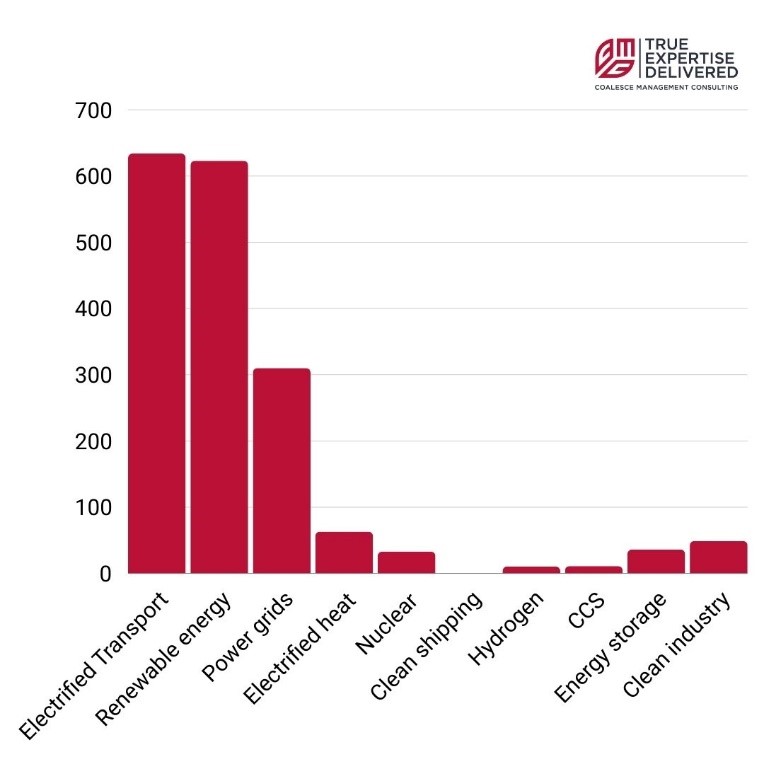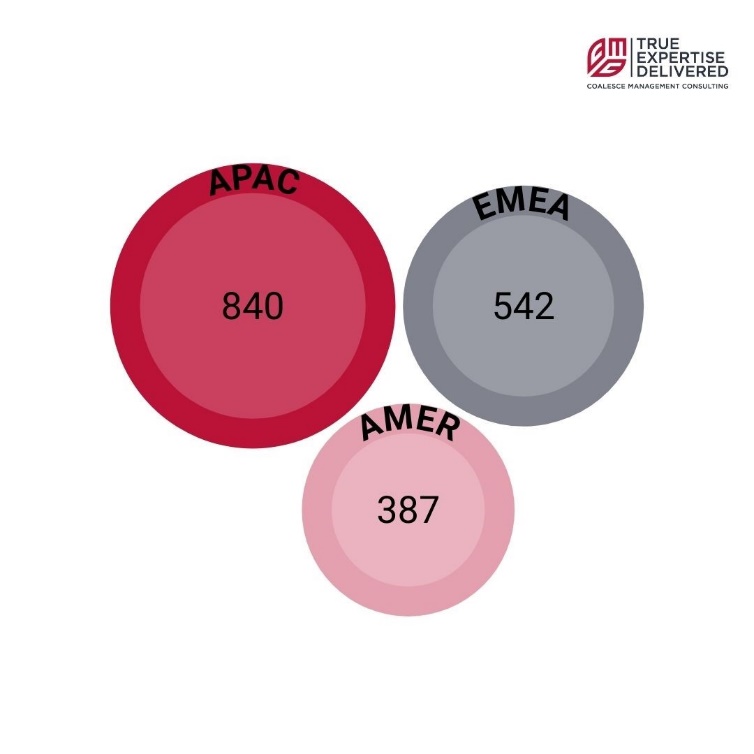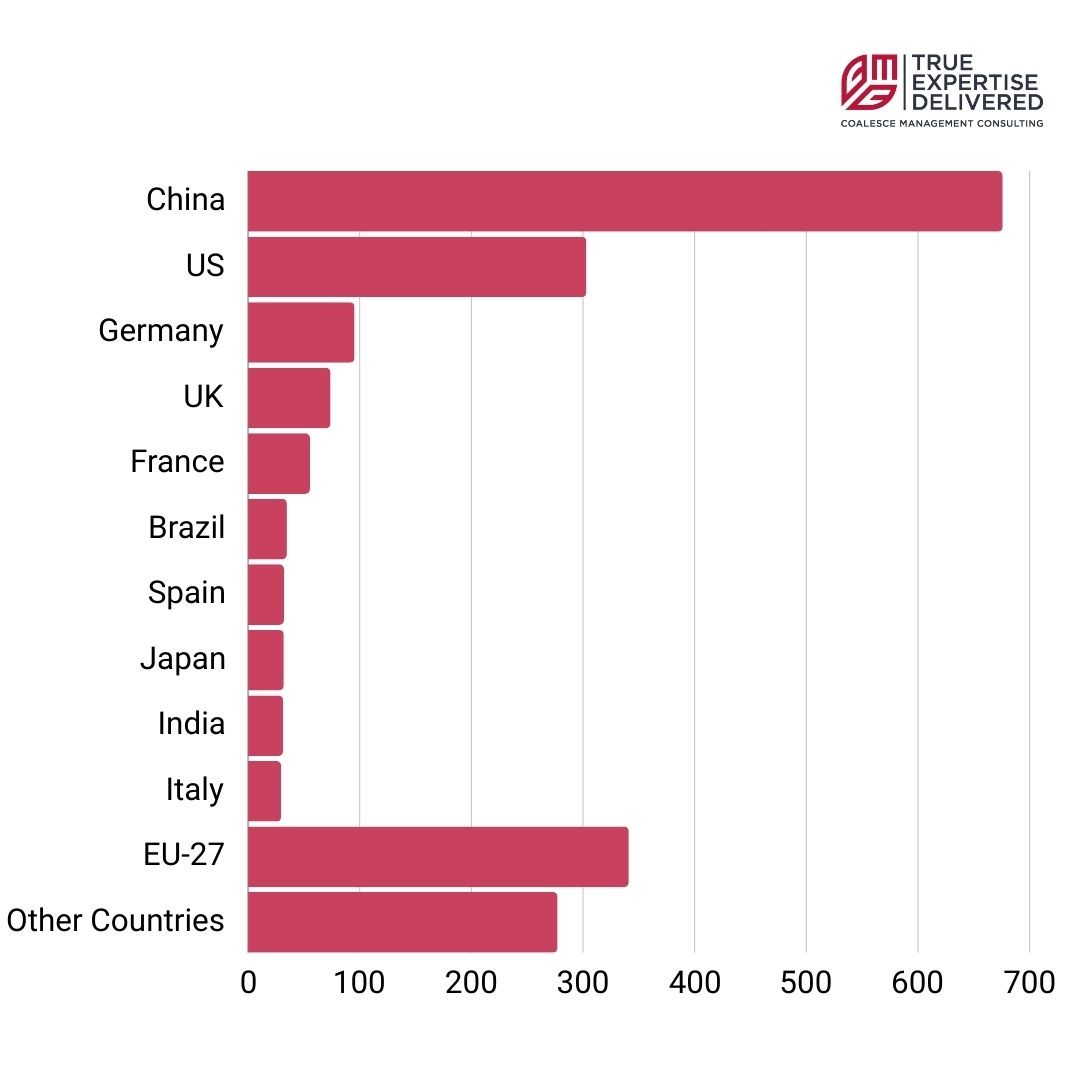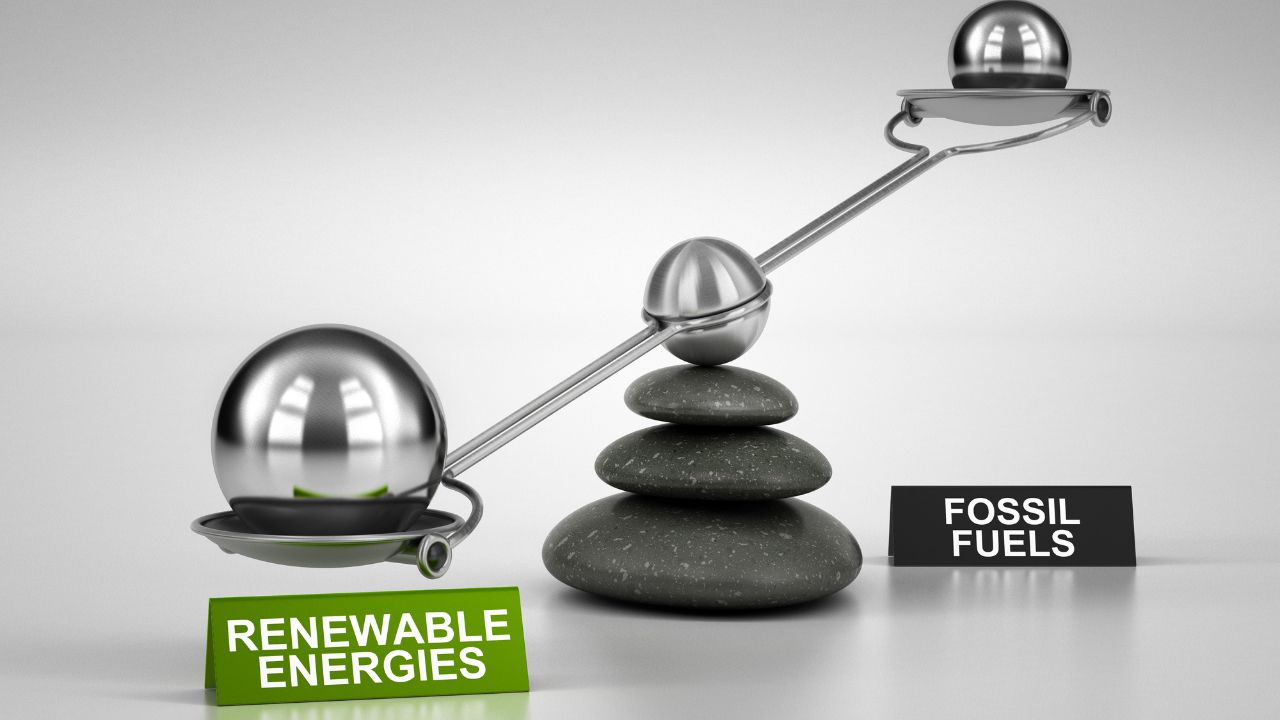Because of the threat of climate change, the global energy landscape is undergoing a profound transformation. At the heart of this lies the growth of energy transition investment, a strategic endeavour aimed at reshaping our energy systems towards sustainability, resilience, and efficiency. It's all about investing in cleaner, more sustainable energy sources to replace fossil fuels. This investment is crucial for driving economic growth, encouraging innovation, and tackling climate risks head-on.
Understanding where investment is going is crucial for being able to support the market with experts in power & energy engineering. Our specialists track the market to stay up to date with the latest developments and the requirements, challenges and opportunities that come with new investments.
So where are the biggest global investments? Which regions are committing more money to new projects and what kind of projects are being tracked as the future of investment? A recent report from BloombergNEF spotlighted the regions committing the most money and the sectors with the biggest prospects. Here’s our summary of the biggest opportunities within the energy market.
Global Numbers
In 2023, energy transition investment reached an all-time high of $1.77 trillion, marking a 17% increase compared to 2022. Global investment in energy transition even surpassed fossil fuel supply investment by $671 billion in 2023. The report observed 10 sectors: electrified transport, renewable energy, power grids, electrified heat, nuclear energy, clean shipping, hydrogen, CCS (carbon capture and storage), energy storage, and clean industry.
Sectors

Figure 1: Energy Transition Investments per Sector (Source: BloombergNEF)
Figure 1 tells us that the significant investment of $634 billion in electrified transport highlights global economies' commitment to sustainable transportation, making it the largest sector of investment in 2023. This represents a year-on-year increase of 36%, surpassing investments in renewable energy, which received $623 billion. Power grids secured third place with an investment of $310 billion, steadily growing each year. Electrified heat and clean energy followed with investments of $63 billion and $49 billion, respectively. Energy storage experienced a remarkable growth of 76%, reaching investments of $36 billion. Nuclear energy secured the 7th place with $33 billion of investment. CCS, with $11.1 billion, nearly doubled its investment and ranked 8th. Hydrogen saw a substantial increase in investment, reaching $10.4 billion, tripling its previous investment. Clean shipping, with an investment of $385 million, ranked last.
The numbers in figure 1 illustrate varying levels of popularity among investors for different sectors. Hydrogen, energy storage, and electrified transport were among the favourites in 2023, while nuclear, electrified heat, and clean shipping experienced slight declines.
Countries

Figure 2: Energy Transition Investments per Region (Source: BloombergNEF)
All regions worldwide are heavily focused on clean energy due to concerns about scarce fossil fuel resources and alarming climate change trends, resulting in increased investment across every region. Figure 2 visualizes the three regions outlined in the report: APAC (Asia Pacific), EMEA (Europe, Middle East, and Africa), and AMER (Americas).
APAC emerges as the primary investor in energy transition, while the Americas contribute "only" $387 billion. However, APAC's investment only grew by 7% due to decreased investment in renewable energy, whereas the Americas saw a 15% increase from the previous year. This is attributed to the Inflation Reduction Act, one of the largest investments in the American economy, climate, and energy security in history.
Despite APAC's prominence as the leading investor, EMEA (Europe, Middle East, and Africa) witnessed the most significant growth at 38%, driven by a robust solar year for Europe and increased investments in electrified transport, CCS, clean energy, and hydrogen.

Figure 3: Energy Transition Investments per Country (Source: BloombergNEF)
The third figure visualises the biggest investors in energy transition. The biggest investor in energy transition is China, contributing 38% of the global total at $675.9 billion. Their focus is on electrified transport, renewable energy, and power grids. The US takes second place as the biggest investor in the same focus sectors as China in 2023, with $303.1 billion. Germany invests $95.4 billion, holding third place on the list. The European country invests the most in electrified transportation. What’s interesting is that five of the top ten countries are within the European Union. Moreover, all EU countries together invest more in energy transition than the US.
What’s Next?
Despite the increased investment in energy transition, all regions need to invest more to align with BNEF’s Paris-aligned Net Zero Scenario by averaging $4.84 trillion per year between 2024 and 2030, which is triple the investments. The scenario is a plan of BNEF to achieve a net-zero emissions world by 2050 and to keep global warming below 2°C. The biggest investments need to go to electrified transport, renewable energy, and power grids.
The long road to a net-zero carbon emissions world presents a significant challenge for many energy companies. The Bain ENR Transition Survey showed that the number of executives who believe we will reach net-zero carbon emissions by 2050 has declined. In 2023, 46% of executives believed we would reach net-zero carbon emissions by 2050. In 2024, that number has declined to 38%. The biggest challenge of the energy transition is the return on investment (ROI). Some companies doubt if consumers will be willing to pay a higher price for clean energy.
In conclusion, the future looks promising, but companies can’t afford to slow down due to the lengthy journey ahead. Between 2010 and 2022, solar and wind power costs dropped significantly, making them cost-competitive with fossil fuels even without financial support. This indicates that energy transition investment is a lucrative and sustainable strategy for energy companies, contributing to a more climate-friendly world.
Why You Should Partner with an Energy Consultancy
Many of our customers are experiencing the following challenges:
- Reaching a critical mass of projects, which stretch an already-overworked team.
- Having significant internal skills gaps linked to executing projects of significantly larger size and complexity.
- Executing projects in new locations, but lacking local expertise.
- Accessing expertise for specific functions or key stages of the project.
All these challenges pose a risk to impacting predictable project outcomes. An energy consultancy will help you with these problems, providing tailored solutions.
CMC provides strategic expertise and agile projects support for evolving industries, such as power generation, steel, EV batteries, hydrogen and carbon capture. We uniquely address the challenge of integrating advanced, specialised knowledge into projects within rapidly evolving industries. Unlike traditional staffing, consulting or EPC firms, we focus on agile project execution.
True Expertise Delivered
Coalesce Management Consulting is an experienced consulting organisation that provide companies with the best consultants for their projects. We have specialised energy consultants who can take your company to the next level regarding energy transition.
Get in touch with our energy specialists to learn more about partnering with CMC today.


